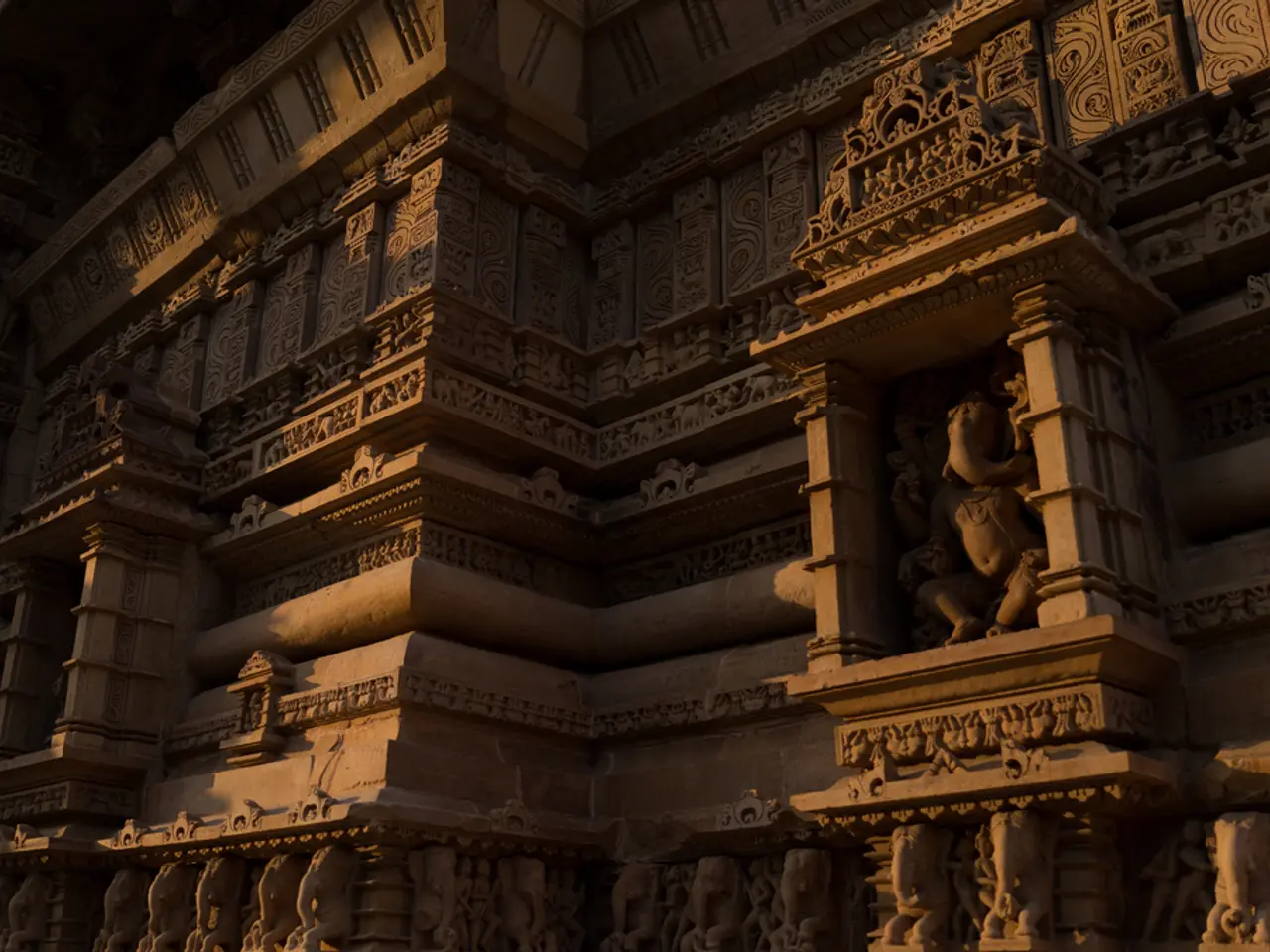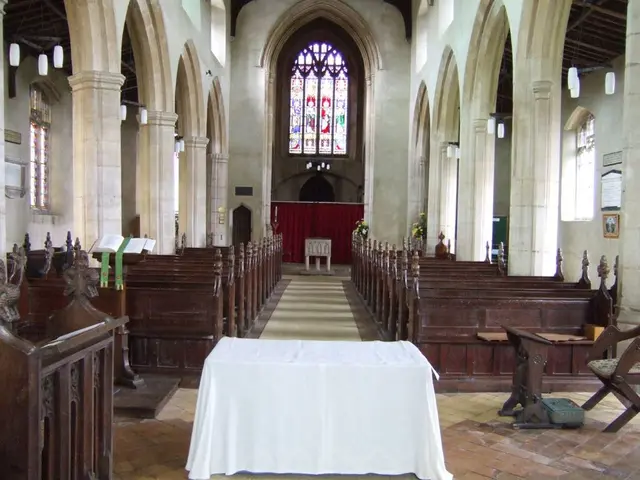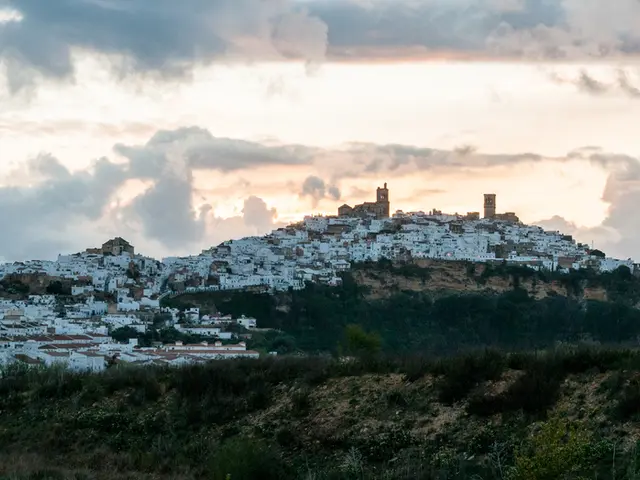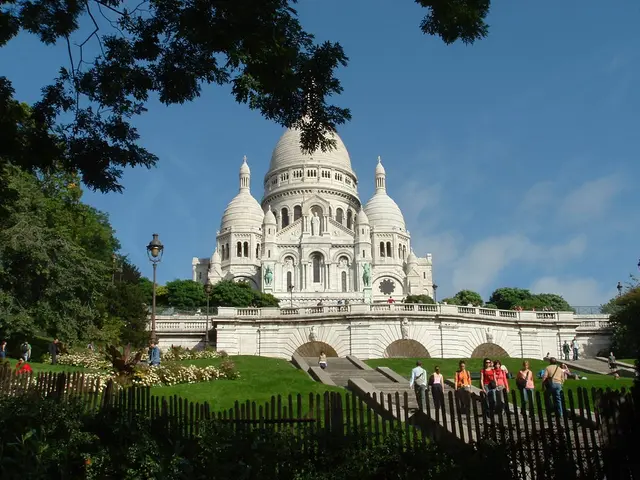Historic Gaudí-designed structure in Barcelona has been declared one of the world's most stunning edifices, despite being in the process of completion.
The Sagrada Familia, a masterpiece of Catalan architect Antoni Gaudí, is set to complete its construction after 144 years, with the expected completion date scheduled for 2026[1][3]. This iconic basilica in Barcelona has been under construction since 1866, making it the only building on Time Out's list of the most beautiful buildings in the world that is not yet completed.
Recently, the basilica has reached a significant milestone with its central tower becoming the tallest structure in Barcelona at 172.5 meters, symbolizing the building's approach to completion after 140 years[2]. The last major construction phase involving the finishing of the five remaining towers started following the issuance of a legal construction permit in 2019[1].
While all architectural work is planned to be finished by 2026, some detailed elements such as sculptural carvings, particularly on the Glory façade, will continue beyond this date as part of the ongoing finishes[3].
Located in the heart of the Eixample neighborhood, the Sagrada Familia is a popular tourist destination in Barcelona, easily accessible by metro or bus. Each of the three facades at the Sagrada Familia is sculptural and symbolic, reflecting Gaudí's unique blend of Gothic and Art Nouveau architecture.
The Sagrada Familia began as a project launched by bookseller Josep Maria Bocabella Verdaguer in 1866. Antoni Gaudí, aged 31 at the time, took over the project in 1884 and redesigned it, imagining 18 towers, three facades, and a nave with vegetable columns. Gaudí dedicated over 43 years of his life to the construction of the Sagrada Familia.
It is important to note that while the basilica's construction is nearing completion, Gaudí died in 1926 before the completion of the basilica, and his body now rests in the basilica's crypt. The Sagrada Familia, even in its incomplete state, already serves as an architectural gem, similar to the Eiffel Tower for Paris or Big Ben for London.
The central altar's design was inspired by a creation by Antoni Gaudí and was completed by architect Jordi Bonet i Armengol. The altar is framed by two tree-like columns and surmounted by a gilded baldachin decorated with vine leaves and glass grapes. The Sagrada Familia's interior design aims to resemble a vast forest, with tree-like pillars that bathe visitors in natural light magnified by vibrant stained glass windows.
The Sagrada Familia's tallest tower will reach 172.5 meters, making it the tallest religious structure in Europe. The construction of the Sagrada Familia resumed after the Spanish Civil War in 1950 and was officially consecrated in 2010. It was hailed by Pope Benedict XVI and became a place of worship.
However, the initial completion date of the Sagrada Familia was 2026, but it has been delayed due to the COVID-19 pandemic, with the new target now set for 2033. Despite the delay, the anticipation for the completion of this architectural marvel continues to grow.
Visitors to the Sagrada Familia can also explore the museum adjacent to it, rich in documents, models, and plans to help understand the project's magnitude. The Sagrada Familia stands as a testament to Gaudí's vision and the power of perseverance, and its completion in 2026 will undoubtedly mark a significant moment in architectural history.
[1] Sagrada Familia Official Website. (n.d.). Construction process. Retrieved from https://www.sagradafamilia.org/en/the-temple/construction-process
[2] BBC News. (2021, July 16). Sagrada Familia's tallest tower becomes Barcelona's tallest structure. Retrieved from https://www.bbc.com/news/world-europe-57881042
[3] The Guardian. (2021, July 16). Sagrada Familia's central tower becomes tallest structure in Barcelona. Retrieved from https://www.theguardian.com/world/2021/jul/16/sagrada-familia-barcelona-central-tower-becomes-tallest-structure-in-city
The Sagrada Familia, upon its completion in 2026, is expected to become a significant addition to travel itineraries, boasting customary visits to frequent in-flights. Intricate details, such as sculptural carvings on the Glory façade, will continue to be finished even beyond the planned completion date, reflecting a commitment to maintaining a high-quality home-and-garden aesthetic throughout the basilica.




